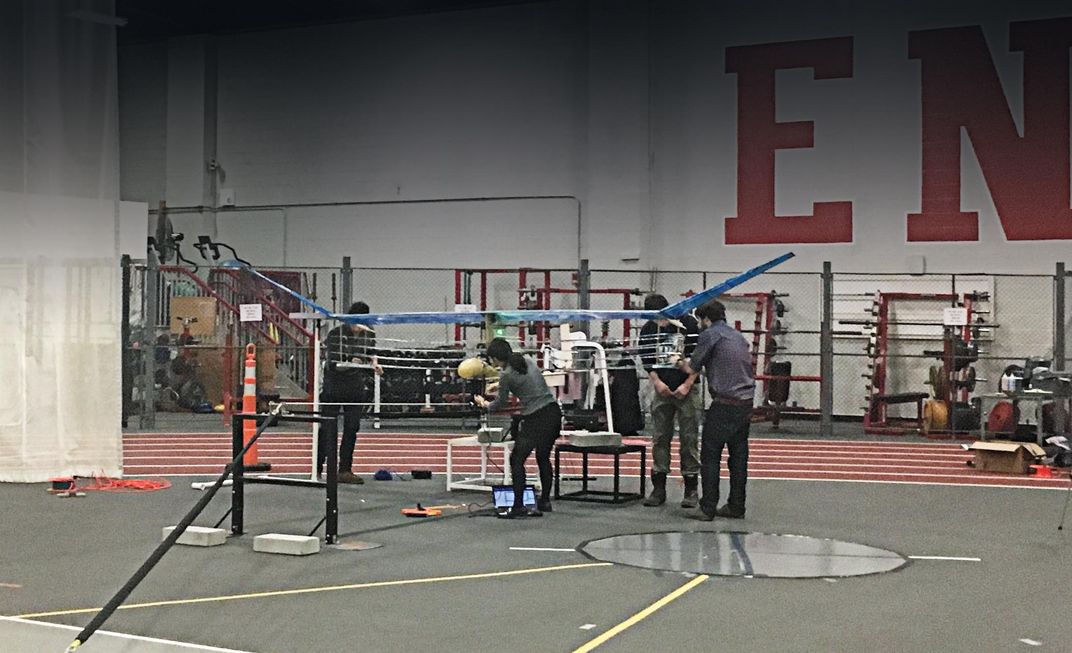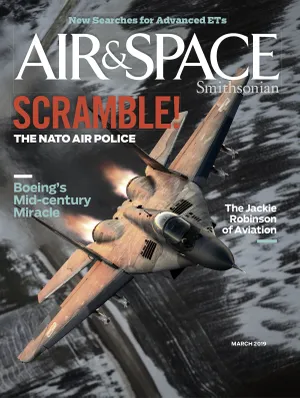An Airplane With No Moving Parts
MIT’s Version 2 was inspired by science fiction.
In sci-fi movies, flight propulsion is almost never based on noisy, messy devices like propellers or turbojets. Our heroes scoot around in warp-driven starships or Millennium Falcons propelled by a silent, serene blue glow.
It was that vision of a future aircraft that drew Steven Barrett, a professor of aeronautics and astronautics at the Massachusetts Institute of Technology, to the development of an electro-aerodynamic propulsion system that could sustain an aircraft in level flight. “It’s not surprising that I was interested in science fiction as a kid,” he says. He began studying the concept of a propulsion system based on ionic wind about nine years ago. Similar technologies were proposed in the 1920s and again in the ’60s, but discarded each time as impractical.

That oft-revisited idea is to ionize, or change the electric charge of, air molecules; strip them of electrons; then accelerate the molecules to impart momentum to nearby air, thereby creating a jet that propels a craft forward. The MIT aircraft—prosaically named Version 2—took three years to build, has a 16.4-foot wingspan, and weighs just under five and a half pounds. Version 2 has an array of wires directly beneath its wings, which amplify the voltage from the stack of lithium-polymer batteries carried in the fuselage. Those highly-charged wires act like a powerful magnet, attracting and stripping away negatively charged electrons from the surrounding air. Adjacent atmospheric nitrogen molecules, as gaseous N2, give up negatively charged electrons to the filament array, creating a corona of positively charged ions—the blue glow.
At the trailing edge of the craft, tiny airfoils carry a corresponding negative charge, which attracts and accelerates the positively charged nitrogen ions. These collide with neutral air molecules and impart momentum. No moving parts, but lots of air moving fast enough across the wing to maintain level flight. But only just. And only indoors, so far, in a gymnasium. And only about 200 feet. Outdoor flights are planned, though testing a net 40,000-volt electrical field outdoors will present some safety challenges.
Version 2’s lift-to-drag ratio is about 10, “which is quite low,” Barrett admits. “We took a conventional airframe and hung the propulsion system from it. In future iterations, we would have a clean airframe, and you’d have an L-over-D that was much higher—more like 18 or 20.”
More efficient batteries coupled with strong, lightweight materials like Kevlar and carbon fiber may yet make blue-glow powered flight a reality. But it won’t be soon. And if it’s raining, your ionic-wind powered flight might be delayed.


